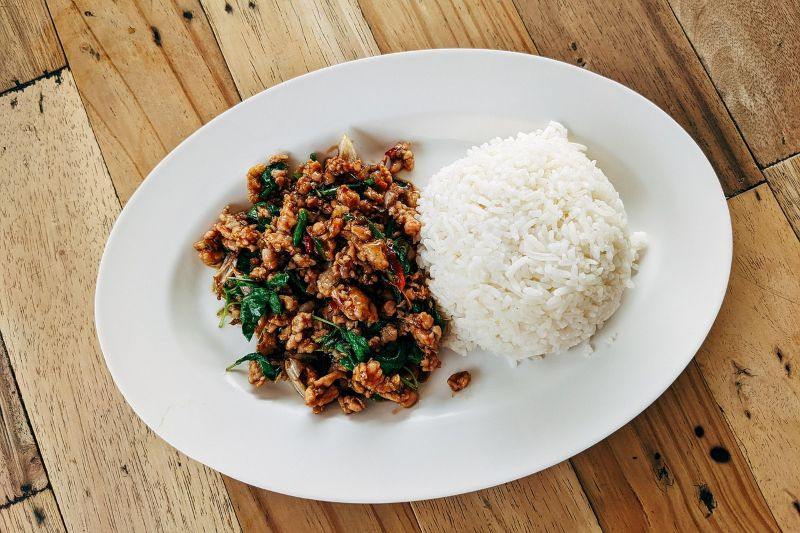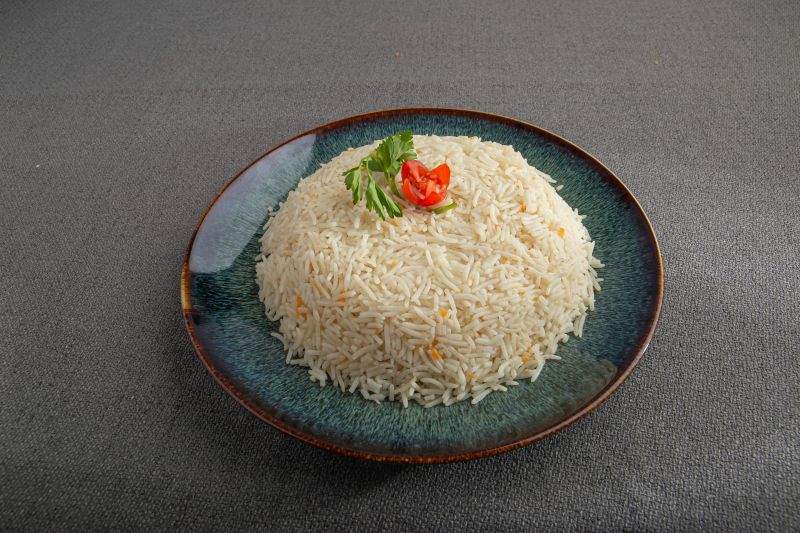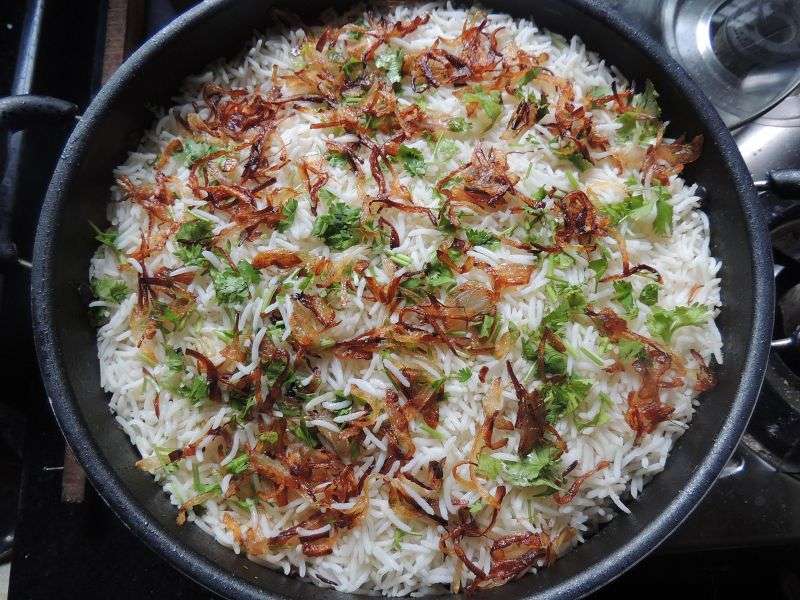When it comes to rice, people usually fall into two camps. There are those who swear by the nutty bite of brown rice and others who can’t resist the fluffy, fragrant basmati. But when someone is standing in the grocery aisle asking, “Is brown rice and basmati rice the same?” the answer is more than just yes or no. Let’s break it down like two neighbors chatting over a kitchen counter.

Brown Rice And Basmati Rice Difference: What Sets Them Apart?
Imagine brown rice as that friend who always carries snacks and gym shoes. It’s wholesome, strong, and never tries to be fancy. Basmati rice, on the other hand, is like the guest who walks into the room with a gentle perfume and perfect posture. It’s light, elegant, and hard not to notice.
Brown rice is a whole grain. It keeps its outer layer called the bran, which holds more fiber, vitamins, and minerals. This layer also gives it a chewy texture. Basmati rice, especially the white kind, has the bran removed. It’s lighter, cooks faster, and has a slightly floral smell that many people find comforting.
There’s also brown basmati rice—a mix of both worlds. It’s a great choice if you want the fragrance of basmati with the fiber of brown rice. When people search “brown rice and basmati rice which is better,” the truth is, it depends on your taste and health needs.
Brown Rice And Basmati Rice Calories: A Closer Look
Let’s talk about something everyone wonders but few ask out loud: calories. A cooked cup of brown rice has about 215 calories. Basmati rice is pretty close—around 205 calories for white basmati, and about 218 for brown basmati.
It’s not just about the numbers, though. Brown rice brings in more fiber. That means it can help you feel full longer. Basmati rice, especially the white kind, digests faster, which might spike your blood sugar a little more.
That’s why for people watching their weight or managing diabetes, brown rice might be the better pick. But don’t count basmati out. When thinking about “brown rice vs basmati rice for diabetes,” many experts agree that brown basmati rice is one of the best options. It has a lower glycemic index, so it won’t make your blood sugar jump quickly.
Is Brown Rice And Basmati Rice The Same? Let’s Clear It Up
On the surface, both can be brown. So people might wonder if they’re just two names for the same grain. They’re not.
Brown rice is a general term. It could come from many types of rice, like jasmine or long grain. Basmati rice is a special variety grown mostly in India and Pakistan. It has its own shape, smell, and cooking style. Think of it like comparing apples and mangoes. Both are fruits, but they taste and feel different.
So while brown basmati rice is brown rice, not all brown rice is basmati. The kind you choose depends on what you’re cooking. Brown rice is great in burrito bowls or hearty salads. Basmati shines in Indian curries and stir-fried rice.
Brown Rice Basmati Rice Cooker: Can You Cook Both the Same Way?
This is where things get practical. If you’re using a rice cooker, both kinds will work. But you might need to tweak the water ratio or timing.
Brown rice usually takes longer to cook. It might need more water. In most rice cookers, the brown rice setting works well. For basmati rice, the grains are more delicate. Rinsing is important, and soaking it for 30 minutes helps it fluff up better.
There are rice cookers made with special settings just for basmati or brown rice. If you eat a lot of rice, this might be worth it. Searching for “brown rice basmati rice cooker” will show options with custom settings for each type.

Brown Rice Vs Basmati Rice: Which One Fits Your Life?
This is where personal taste and lifestyle really come into play. If you love dishes that feel hearty and earthy, brown rice gives you that. It has more bite, kind of like whole-wheat bread compared to white bread.
If you’re cooking for kids or picky eaters, white basmati rice is usually a win. It’s light, fluffy, and doesn’t have a strong flavor. It pairs well with rich sauces and mild veggies.
Some folks prefer a middle path: brown basmati rice. It has fiber and nutrients while still being aromatic and easier to digest than regular brown rice. When friends ask, “brown rice and basmati rice which is better?” there’s no perfect answer. It depends on your body, your meals, and your taste.
According to Wikipedia, basmati rice has been a staple in South Asian cuisine for centuries. Brown rice, on the other hand, became popular in the West more recently because of its whole-grain benefits.
FAQ’s
Q1: Is brown rice better than basmati rice for weight loss?
A1: Brown rice has more fiber, which helps you feel full longer. This might support weight loss goals better than white basmati rice.
Q2: Can I use brown rice instead of basmati rice in recipes?
A2: Yes, you can, but expect a change in texture. Brown rice is chewier and takes longer to cook, so you may need to adjust cooking times.
Q3: What’s the main difference between brown rice and basmati rice?
A3: Brown rice is a whole grain with more fiber. Basmati rice is a fragrant long-grain rice, usually lighter and faster to cook.
Q4: Is brown basmati rice healthier than regular brown rice?
A4: Brown basmati rice is similar in nutrition but may have a lower glycemic index, which is good for managing blood sugar.
Q5: Can you cook both types in the same rice cooker?
A5: Yes, most rice cookers can handle both. Just use the correct water ratio and select the right setting for each type.
Final Thoughts
When it comes to choosing between brown rice and basmati rice, there isn’t a one-size-fits-all answer. It truly depends on what you’re looking for—whether it’s managing blood sugar, boosting fiber intake, or simply enjoying a comforting meal.
Brown rice brings a hearty texture, earthy flavor, and more fiber to the table, making it a smart pick for those watching their digestion or looking to feel full longer. On the other hand, basmati rice—especially the white kind—offers a lighter, fragrant option that pairs well with a wide range of dishes. It also has a lower glycemic index compared to many other white rice types, which is something people with diabetes often appreciate.
If calories are a concern, both types are fairly close, but brown rice may leave you feeling fuller longer thanks to the fiber. And for anyone asking is brown rice and basmati rice the same?—they’re not. They differ in taste, texture, nutrition, and how your body processes them.
The great news is, you don’t always have to choose. Many people enjoy blending both in the same meal—like using a brown rice basmati rice cooker to make a fluffy mix with the best of both worlds.
So whether you’re focused on flavor, health, or simplicity, both types have a place in your kitchen. Try them out, listen to how your body responds, and go with what makes you feel your best.

